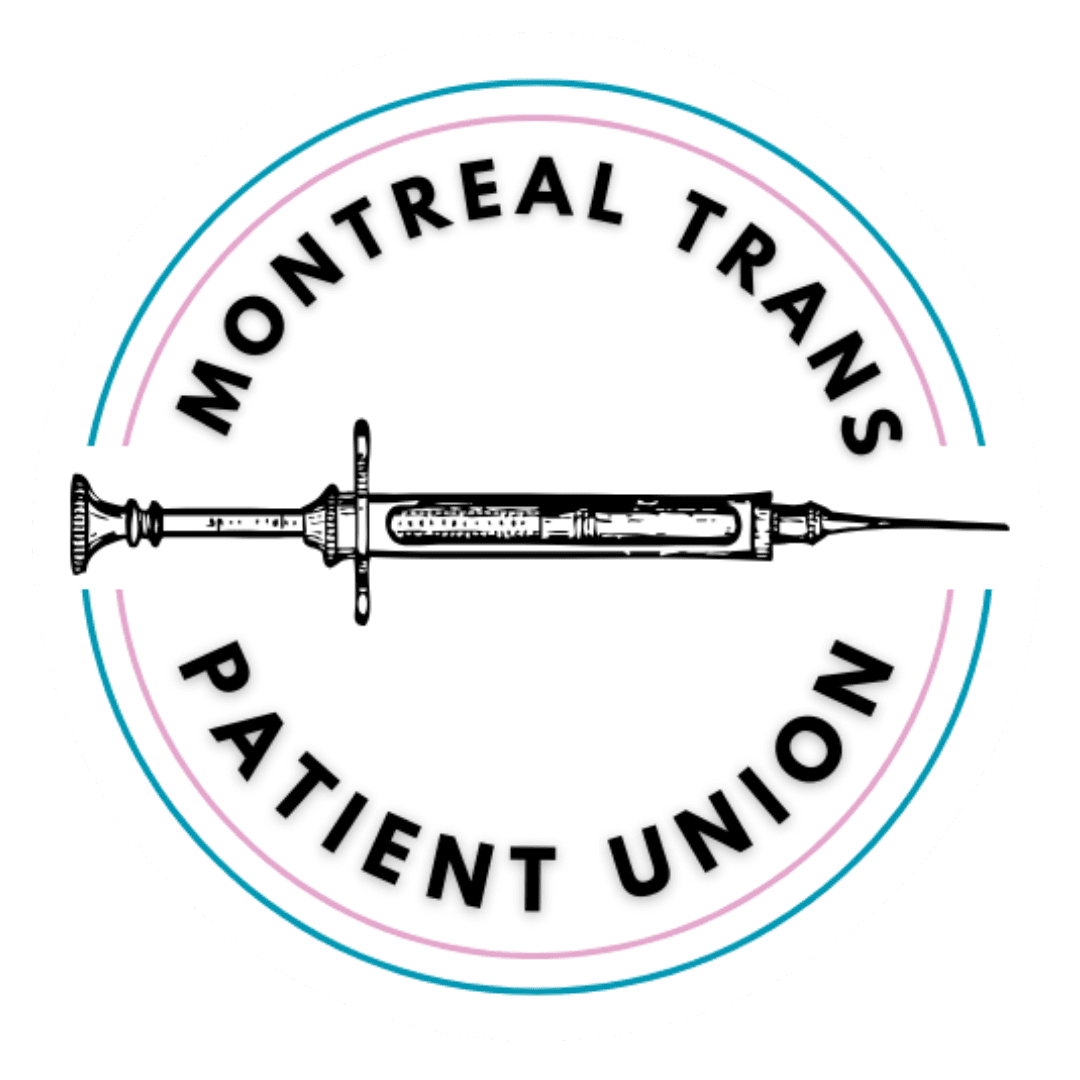Challenges in discussing trans patients & fertility preservation: a under-discussed and politicized topic
Between the long history of trans people’s forced sterilization to access transition, and the current demonization of HRT as ‘chemical castration’, discussions of trans patients and fertility preservation is often made more difficult by transphobia. These conceptions impact providers’ ideas of what trans people should want, and the value of trans peoples’ fertility.
It is common for us to speak to patients who have had poor or no conversations with providers about fertility preservation when starting HRT. Very often HRT providers do not mention that fertility preservation is an option for patients, or providers act very dismissive when discussing it with trans patients. In fact it is common for many providers to not even know fertility preservation is covered under RAMQ, or how to refer a trans patient for fertility preservation.
Conversely, we have spoken to patients (especially students and young adult patients) who are effectively pressured into preservation by providers. In one case a doctor would continue to ask her patients if they wanted fertility preservation even after they clearly said no. She would then ask her patients if their parents supported their transitions, and said that they should consider how fertility preservation could make their parents more accepting of them.
Fertility preservation is for many a vital tool in supporting their medical transitions, allowing them to have genetic children later in life. However preservation is certainly not for everyone. Fertility preservation comes with drawbacks, it can delay access to HRT by a number of months. Also, for transmasculine patients the process of egg retrieval is quite involved: it typically requires a series of hormone injections, blood tests, and ultrasounds for 1-2 weeks, followed by a surgery performed under local anesthesia to remove the eggs. Patients have often reported the procedure is more invasive and painful than advertised by HRT doctors and gynecological providers.
The choice to get fertility preservation before starting HRT is a deeply personal one, and every patient deserves to be able to make the most well informed decision possible. Here’s some of what you need to know about fertility preservation.
Impacts of HRT on fertility
While there are cases of trans people going off of HRT and having genetic children, the research indicates that feminizing HRT is very likely to make patients go infertile. For masculinizing HRT, there are a few new small studies (see one here) indicating fertility may not be impacted, but it’s the only study on the long term effect of T on fertility and more research is needed.
If having genetic children is important to you, you should consider getting your sperm or eggs frozen before going on HRT. Also, if you have already started HRT, pausing your HRT to get your sperm frozen may still be an option, and pausing to freeze your eggs is even more so still an option (see more here). However, RAMQ will not cover preservation if you have already started HRT (see more details on cost below).
Fertility preservation is quite reliable, especially if you are a young person.
The odds of frozen eggs leading to births are quite good, but they are not guaranteed. Egg freezing procedures for patients under 36 who get many eggs frozen (10-20) have a live birth rate of 70%-90% (according to this source), and the odds are likely even higher for someone in their early 20s. Also note that a patient’s frozen eggs don’t need to be carried by them; a patient’s embryo can be put into the uterus of a surrogate. As such, transmasculine patients can have genetic off-spring without needing to become pregnant themselves.
For transfeminine people the odds are even better, depending on how you are using frozen sperm, the success rate is either the same or slightly lower than of never-frozen sperm (see here).
RAMQ covers fertility preservation for those starting HRT!
RAMQ covers: Extraction, the first freezing, and 5 years of storage (or until you turn 25, whichever is longer). As of 2024, it then costs $200 a year to keep it frozen.
- In order to get RAMQ to cover your preservation, your provider needs to send a referral to a relevant fertility clinic saying you need fertility preservation because you are beginning HRT (a medical procedure which will compromise your fertility).
- To our knowledge there are four clinics in the area that provide this service: MUHC Reproductive Centre, CHU Sainte-Justine, Clinique ovo, and Fertilys. Note that some of these clinics will say on their website that they do not accept RAMQ. Some private fertility clinics do not have doctors who are affiliated with RAMQ and so patients will have to pay upfront and request reimbursement by RAMQ within the following year.
Fertility preservation can be pricey without appropriate insurance or when having to pay up-front and get reimbursed later, particularly for egg retrieval and freezing. For an example of costs without insurance see this quote for sperm and egg freezing at Fertilys (As of June 2025: $6100 for egg freezing plus one year storage, and $550 for sperm freezing plus one year storage).
If you are not covered by RAMQ some private insurances do also cover fertility preservation but it is not very common. Fertility preservation is also unfortunately not typically covered in GAC insurance.
Have any questions or concerns after reading this document?
Do you still have questions or concerns about accessing fertility preservation? Contact us anytime for transition troubleshooting.
Want to share your experience to help inform this document and others? Fill out this form to be interviewed, coffee/tea on us!

